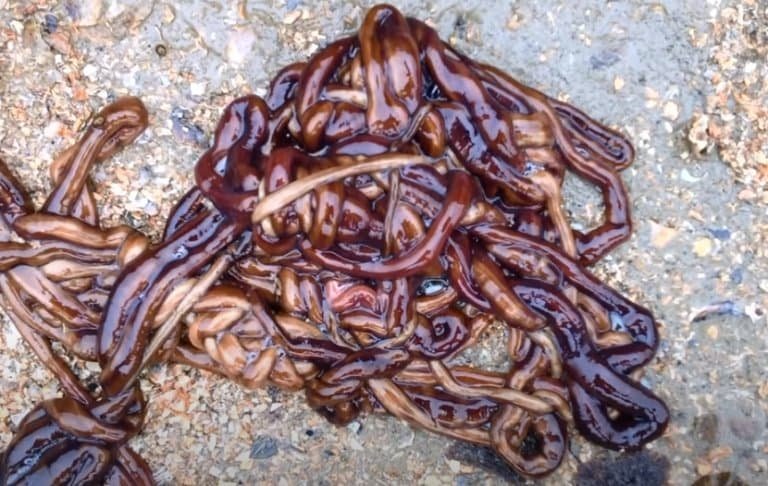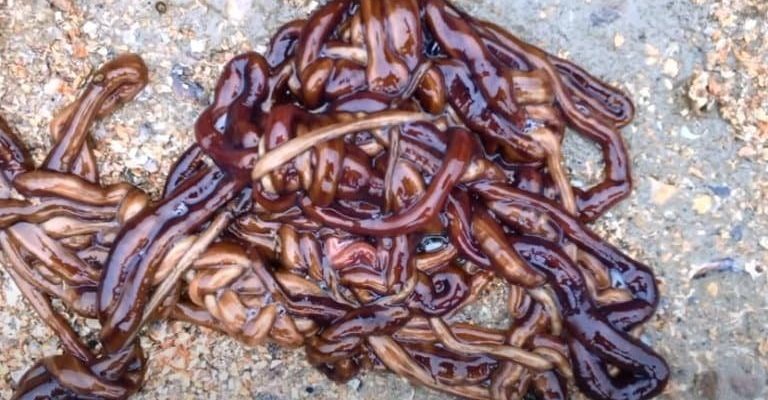
Now, let’s zoom in on one of the more peculiar residents of our ecosystems—the bootlace worm. This fascinating creature, known scientifically as *Lineus longissimus*, is not just your average worm; it’s also one of the longest animals on Earth! And believe it or not, its survival is closely tied to the health of its habitat. So, what happens when we restore these environments? Well, let’s explore that, shall we?
What is Habitat Restoration?
**Habitat restoration** refers to the practice of returning a natural environment to its original state after it has been degraded or destroyed. Think of it as gardening—when you clear away weeds and dead plants to help flowers grow again. The aim here is to revitalize ecosystems, allowing native plants and animals to thrive once more. This can involve removing pollution, replanting vegetation, or even reintroducing species that have been lost.
Here’s the thing: **restoration** isn’t just about planting trees or cleaning rivers. It often requires a deep understanding of the ecosystem in question. For example, if you’re restoring a coastal area, you need to consider not only the organisms living there but also factors like water quality, tides, and even human impact. Habitat restoration is like putting together a complex puzzle—every piece must be in the right place for the picture to come together.
Why is Habitat Restoration Important?
Restoration plays a crucial role in fighting biodiversity loss. When habitats are destroyed—due to urban development, pollution, or climate change—the local flora and fauna suffer. By restoring these areas, we can help preserve not only the iconic species but also the lesser-known ones, like bootlace worms.
You might be wondering, “What’s the big deal about saving a worm?” Well, **bootlace worms** are the ultimate team players in their ecosystems. They help break down organic material, making nutrients available for other organisms. This means that their presence is vital for the health of the entire habitat. So, when we restore their environment, it’s like hitting the refresh button on a whole community of life.
Plus, restoring habitats can provide numerous benefits to humans. Healthier ecosystems lead to cleaner air and water, more recreational opportunities, and even enhanced resilience against floods and storms. It’s a win-win situation!
The Life of a Bootlace Worm
Bootlace worms are pretty unique. These elongated creatures can grow to impressive lengths—some even over 30 meters! They thrive in marine environments, often found hiding in sediments. Their long, slender bodies can be quite an impressive sight, but they’re often overlooked because they blend in so well with their surroundings.
These worms play a vital role in the food web. They feed on decaying organic matter, helping to recycle nutrients back into the ecosystem. When habitats are degraded, their food sources can dwindle, leading to a decline in their populations. This shows just how interconnected everything is in nature: if one species suffers, others will too.
What’s even more fascinating about bootlace worms is how they reproduce. They can reproduce asexually, meaning one worm can produce offspring without mating. This adaptability might help them survive in challenging environments, but it also underlines the need for healthy habitats to ensure their long-term survival.
How Habitat Restoration Affects Bootlace Worms
When we invest in habitat restoration, bootlace worms stand to benefit significantly. Restoring their environment means increasing the availability of food sources and improving the overall health of the ecosystem. Healthier sediments mean more organic matter for these worms to feast on, supporting their growth and reproduction.
Let’s look at the process: during restoration, efforts like sediment removal and planting native vegetation can help not just bootlace worms, but a whole range of species. Restoring water quality and increasing biodiversity can create a healthier habitat for these worms and others that share their ecosystem. It’s like giving them a buffet of delicious options.
Moreover, restoring habitats can enhance the resilience of ecosystems against climate change. Healthier ecosystems have a better chance of adapting to changing conditions, which means bootlace worms and their neighbors can thrive even in the face of challenges.
Case Study: Successful Habitat Restoration
One great example of successful habitat restoration is the **Thames River** in London. Once heavily polluted and lifeless, dedicated restoration efforts have revitalized this river. Over the past few decades, initiatives focused on cleaning the water, restoring riverbanks, and reintroducing native species have transformed the Thames into a vibrant ecosystem.
You might be surprised to know that species including the bootlace worm have made a comeback here. Thanks to habitat restoration, the river now supports a diversity of wildlife, including fish, birds, and even freshwater crustaceans.
This case shows how restoration can bring back life to areas that seemed lost. It’s more than just a project; it’s about rekindling a connection between humans and nature, and reminding us of the incredible resilience of life.
Challenges in Habitat Restoration
While habitat restoration holds great promise, it’s not without its challenges. One major hurdle is funding. Restoration projects can be expensive and require ongoing support to be truly effective. Often, it’s a struggle to find the right financial backing, especially when competing with other pressing issues.
Another challenge is the restoration of complex ecosystems. Not every environment is the same, and what works in one area might not be effective in another. It requires thorough research and the involvement of experts to design effective restoration plans. You need to make sure that every species, including our buddy the bootlace worm, is taken into consideration.
Finally, there’s the issue of ongoing human impact. Even after restoration, human activities like pollution and urban development can pose ongoing threats. This highlights why it’s so important to engage local communities in restoration efforts—they can help monitor and protect these ecosystems for the long term.
How You Can Get Involved
If you’re passionate about supporting habitat restoration, there are several ways you can help. Local organizations often organize volunteer days where you can participate in planting trees or cleaning up natural areas. These activities not only help the environment but also connect you with like-minded individuals who care about nature.
Educating yourself and others about the importance of ecosystems is another great way to contribute. Share what you learn with friends and family, and consider getting involved in local conservation initiatives. Spreading awareness can lead to more collective action, which is vital for making a real difference.
Lastly, consider supporting organizations focused on habitat restoration through donations or fundraising efforts. Every little bit helps, and your contributions can go a long way in ensuring that creatures like bootlace worms have a thriving home.
In summary, **habitat restoration** is essential not just for the survival of species like bootlace worms but for the health of our planet. When we come together to restore these ecosystems, we’re investing in a brighter future for all. So, why not get involved? After all, every action counts, no matter how small!

